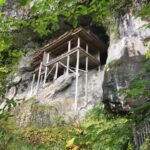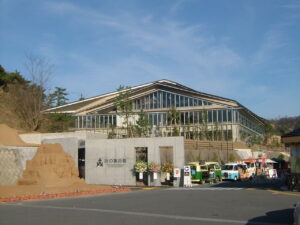
Located beside the famous Tottori Sand Dunes (鳥取砂丘), the Sand Museum in Tottori City, Tottori Prefecture, is the world’s first and only museum dedicated exclusively to sand sculptures.
Opened in 2006, it showcases spectacular large-scale sand art exhibitions created by world-class sculptors using only sand and water. Each year features a new theme inspired by a different country or region, so the displays change completely annually — making every visit a once-in-a-lifetime experience.
The museum’s mission is to “convey the beauty and fragility of sand art” and to celebrate international culture through the medium of sand.
Contents
Key Facts
-
Name: The Sand Museum (砂の美術館, Suna no Bijutsukan)
-
Location: Tottori City, Tottori Prefecture, Japan
-
Opened: 2006 (current permanent building opened in 2012)
-
Theme: “Travel Around the World in Sand”
-
Materials: 100% natural sand and water — no glue or additives
-
Exhibition Cycle: One new theme each year (April–January)
-
Artists: International sand sculptors from more than 15 countries
-
Average Works per Exhibition: 20–30 massive sculptures
Highlights
Annual Theme Exhibitions
Every year, the museum chooses a different country or world region as the central theme. Past themes include:
-
Italy – The glory of ancient Rome and the Renaissance
-
Russia – Imperial palaces and ballet artistry
-
The United States – From the Statue of Liberty to Hollywood dreams
-
Nordic Countries – Fairy tales, Vikings, and northern lights
-
South America – The mysteries of the Inca and Maya civilizations
-
France – From Parisian streets to the Palace of Versailles
-
Africa – Wildlife and tribal culture expressed through sand
Each exhibition features gigantic sand sculptures up to 10 meters tall, depicting architecture, historical scenes, and famous figures — all rendered in astonishing detail.
Museum Building
The current permanent structure, opened in 2012, is a spacious, climate-controlled hall designed to preserve delicate sand art for up to 10 months.
-
Main Exhibition Hall: Massive indoor area displaying the year’s themed sculptures.
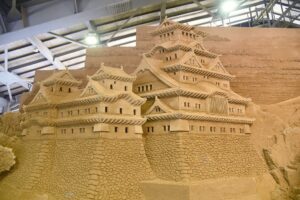
-
Observation Terrace: Offers panoramic views of both the sculptures and the Tottori Sand Dunes beyond.
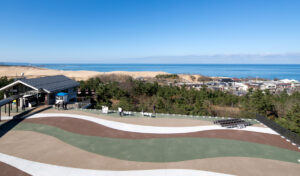
-
Projection & Lighting: Special illumination brings the sculptures to life at night.
-
Second Floor Gallery: Panels and videos explain the creative process and the international artists behind each piece.
The Artists
Each year, about 20–30 professional sand sculptors from around the world — including Japan, the U.S., Italy, the Netherlands, and India — are invited to collaborate.

They spend weeks to months shaping the sand using only water and compaction techniques, without any adhesives.
The results are astonishingly intricate sculptures that remain stable until the next exhibition’s end, after which they are intentionally destroyed — symbolizing the ephemeral beauty of art.
The Philosophy — “Beauty in Impermanence”
The museum’s concept embraces the Japanese aesthetic of impermanence (無常, mujō) — celebrating things that exist only for a limited time.
After each exhibition closes, the sculptures are dismantled, returning the sand to the earth, reminding visitors of the transience of life and creativity.
Location & Access
Address:
2083-17 Yuyama, Fukube-cho, Tottori City, Tottori Prefecture 689-0105, Japan
By Train:
-
From Tottori Station, take a local bus (Sand Dunes Line) to “Sakyu Kaikan” stop (about 20 minutes).
-
The museum is a 5-minute walk from the stop, next to the main Tottori Sand Dunes parking area.
By Car:
-
About 10 minutes from central Tottori City.
-
Free parking available near the museum and dunes.
From Tokyo/Osaka:
-
Fly to Tottori Airport, then take a bus or taxi (20–30 minutes).
Admission & Hours
| Category | Price (Approx.) |
|---|---|
| Adults | ¥800–¥1,000 |
| Children (Elementary/Junior High) | ¥400–¥500 |
| Preschool Children | Free |
-
Open: 9:00 AM – 6:00 PM (last entry 5:30 PM)
-
Closed: Mid-January to early April (for rebuilding the next exhibition)
(Check official website for updated hours and yearly schedule.)
Visitor Experience
Walk Through a World of Sand
The moment you enter, you’re surrounded by towering sculptures — palaces, animals, gods, and mythical creatures — all made of sand.
Soft music and lighting create a magical, otherworldly atmosphere.
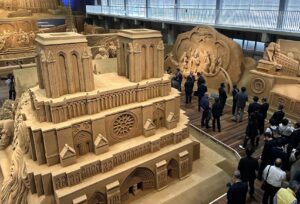
Photography
Photography is allowed and encouraged, but touching the sculptures is strictly prohibited.
The museum’s upper floor provides panoramic photo spots.
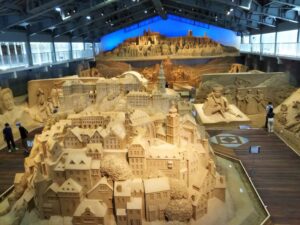
After Your Visit
There’s a museum café and souvenir shop selling sand art gifts, postcards, and local Tottori specialties.
Try Tottori’s famous “20th Century Pear” ice cream or a coffee while enjoying dune views.
Combine with Nearby Attractions
Since the museum is located right beside the Tottori Sand Dunes, it’s ideal to explore both in one trip.
Nearby you can enjoy:
-
Camel rides on the dunes

-
Sandboarding & paragliding experiences
-
Tottori Sand Dunes Visitor Center for geological info
-
Tottori Sakyu Lift (chairlift to a high dune viewpoint)
-
Seafood restaurants serving fresh crab and sashimi
Best Time to Visit
-
Spring (April–June): Comfortable weather and the opening of a new exhibition.
-
Summer (July–August): Brilliant sunlight enhances sculpture details.
-
Autumn (September–November): Clear skies and mild temperatures.
-
Winter (December–January): Quiet atmosphere before the next renewal.
Why Visit the Sand Museum?
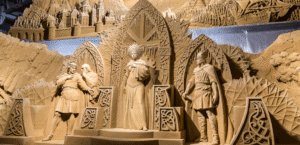
-
World’s first and only sand art museum
-
Ever-changing annual exhibitions themed on different world cultures
-
Masterpieces crafted by international artists
-
Located beside Japan’s largest sand dunes — a perfect scenic pairing
-
A poetic expression of impermanence found in nature and art
Travel Tips
Visit early morning or late afternoon to avoid crowds and enjoy soft natural lighting.
Don’t miss the viewpoint outside the museum for the dunes and Sea of Japan.
Bring comfortable shoes if you plan to walk in the sand dunes afterward.
Combine with Uradome Coast or Tottori Castle Ruins for a full-day itinerary.
Summary
The Sand Museum of Tottori is far more than a gallery — it’s a symbol of artistic imagination and transience, sculpted from the simplest materials: sand and water.
Whether you’re an art lover, photographer, or curious traveler, it’s a destination that leaves a lasting impression — even though its masterpieces disappear each year.
Related articles
Official Website
https://www.sand-museum.jp/en/
Accommodation sites
Agoda
